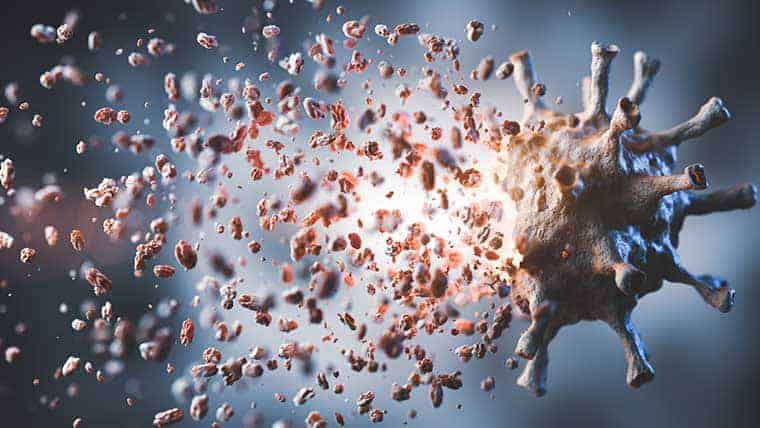What if I told you a safe technology exists to disinfect entire occupied indoor spaces continuously from contaminants like COVID-19, E. Coli, MRSA, Norovirus and more to an effectiveness of over 90%? Do you think that may have some value in today’s world? This technology exists and is already in use with promising test results for killing Coronavirus. There is at least one major international food & beverage manufacturer that has started to implement this technology in their facilities, and we predict there will be more in the near future.
What is it?
The indoor environment is HEAVILY influenced by Heating, Ventilation and Air Conditioning (HVAC) systems. Mead & Hunt designs HVAC systems to control indoor air temperature, humidity, quality and cleanliness to various degrees. Up to this point, air treatment systems like high efficiency air filters and ultraviolet irradiation systems (UVC), have been used to clean air at the source, inside air conditioning systems. This indirectly conditions the indoor space.
Now, a relatively new technology has come along that can be placed inside HVAC systems equipment to treat conditions in the space directly. It’s called Needlepoint Plasma Ionization (NPI). Simply described, NPI is a process in which electricity is applied across two electrodes, which creates negative and positive ions. In turn, these ions react with airborne water vapor and oxygen to create free radicals, which travel into occupied building spaces to break down odors and kill microorganisms.
Does it work?
The United States Air Force recently funded testing to simulate an 8 foot by 20 foot interior space with SARS-Cov-2 virus samples in every corner of the room. The test measured a 99.89-99.99% kill rate after 30 minutes. Additional independent lab testing has shown a kill rate of 90%+ over a 30-minute time period for other viruses like E. Coli, Staphylococcus, MRSA, Legionella and Norovirus.
Is it Safe?
Older Plasma Ionization technologies produced ozone as a byproduct, which can be potentially harmful to humans in high enough concentrations. Modern NPI equipment can be manufactured and tested to certify a very low ozone generation rate of 0.05 parts per million (50 ppb) or less by volume. 0.05 parts per million ozone generation has been deemed an acceptable ozone airborne concentration limit by the United States Environmental Protection Agency (USEPA), as well as the California Air Resources Board (CARB).
Is it difficult to implement?
Installation of an NPI system is usually fairly simple. The typical NPI system has a reasonable cost and can be installed in the central HVAC system or in supply air ductwork serving the indoor space. It requires a small electrical power connection relative to the electrical requirements of the HVAC system. NPI systems can be scaled up to very large sizes as needed.
How can it help the food & beverage industry?
One of the biggest fears food manufacturing companies have right now during the COVID-19 pandemic is the shutdown of their production plant(s) due to an outbreak. Most food plants have put current standard safety procedures in place, such as mask wearing, temperature testing, questionnaires, segregation of the building population and more frequent cleanings/washdowns. But they are still asking themselves, “Is that enough?” Although a plant can never be 100% sure they have done everything possible to prevent an outbreak, this NPI technology can give them another relatively low-cost tool to minimize COVID-19 risk.
Buyer beware in the year of COVID-19.
The building owner should be aware of a few things before jumping in and purchasing an NPI system. If your building HVAC system is more complex than a residential HVAC system, consider hiring an HVAC engineer to assess the installation of an NPI system to minimize any negative system modifications which could affect overall system performance. Also, consider whether or not using this technology could affect your food manufacturing process. If the process includes biologically active components such as starter cultures or fermentation, a review of the suitability of NPI should be performed first. Finally, don’t assume installing an NPI will make all your sick building issues go away. There are still a lot of unknowns about how viruses (especially COVID-19) spread, so consider this a tool in the toolbox to combat sick indoor environments.



